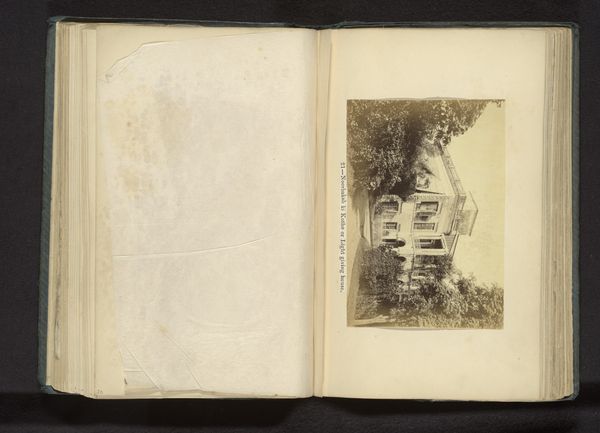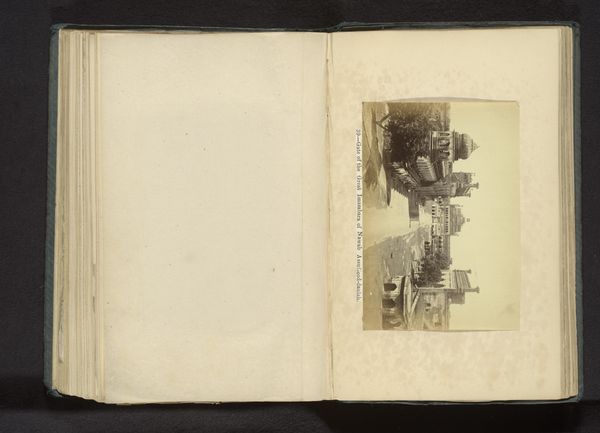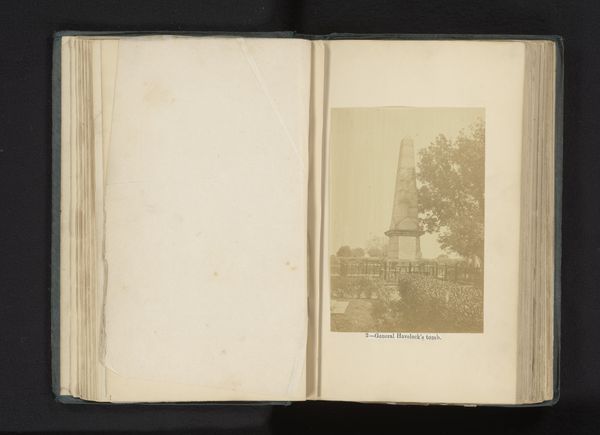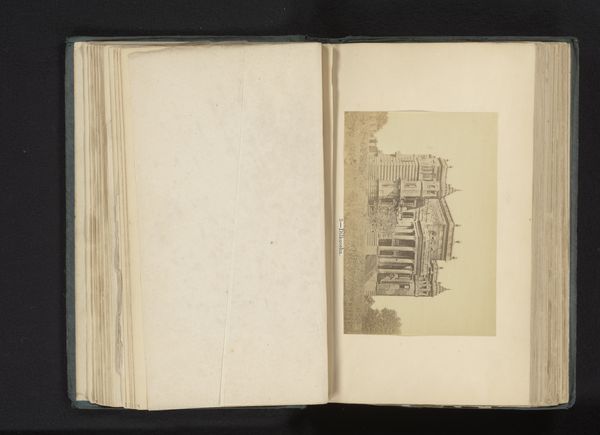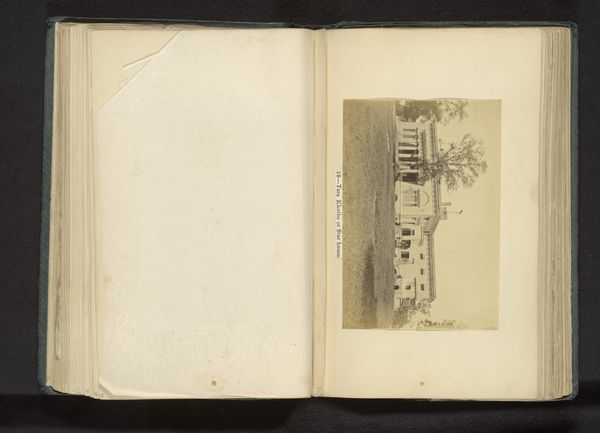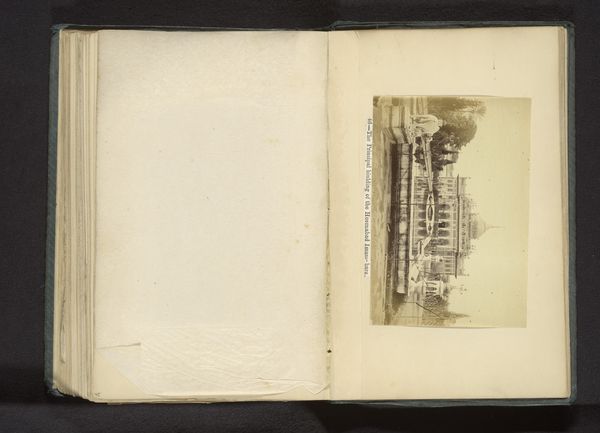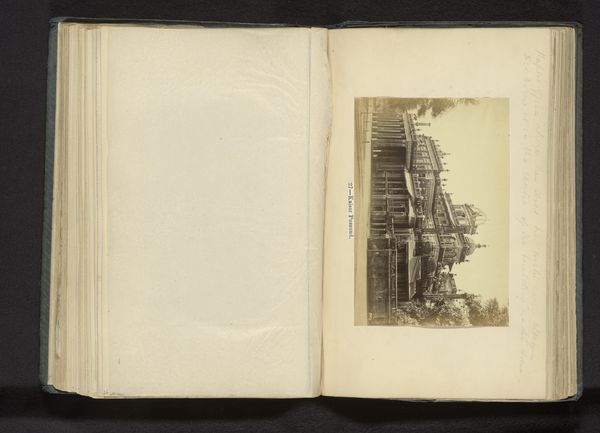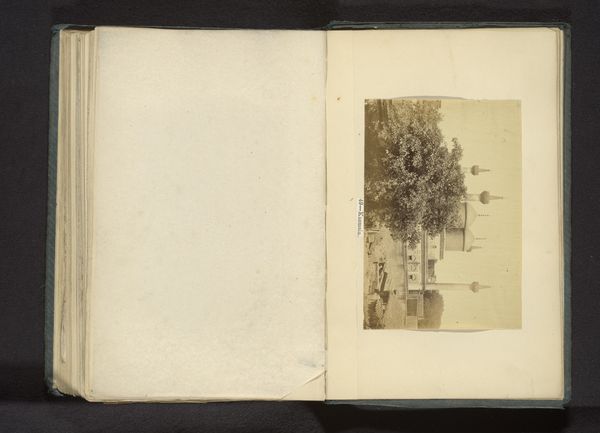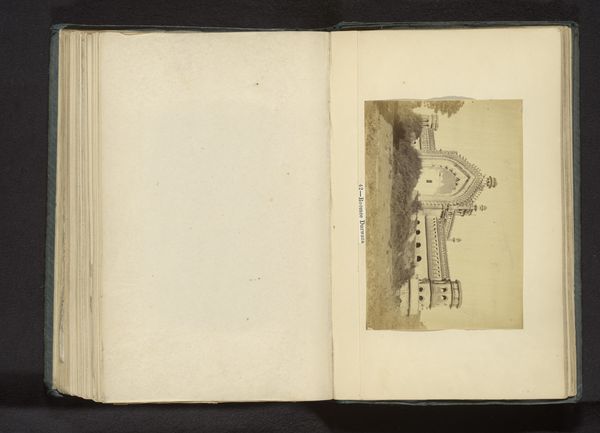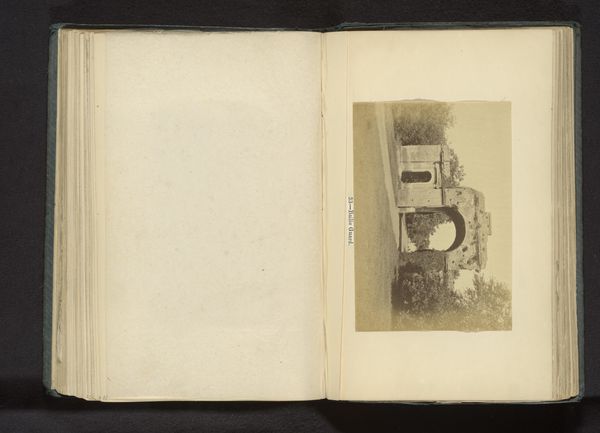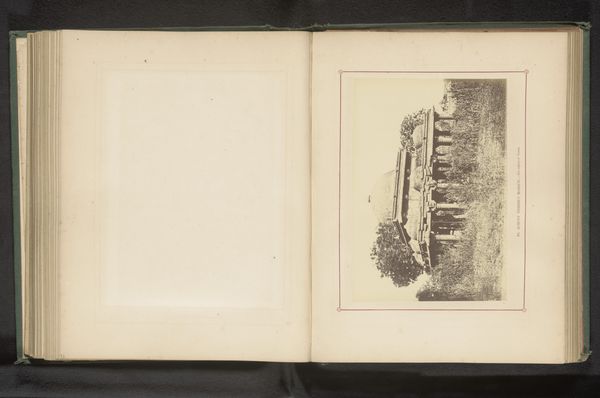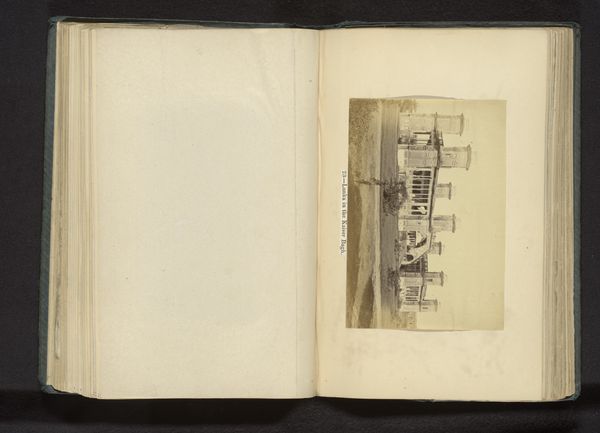
photography, albumen-print
#
aged paper
#
homemade paper
#
paper non-digital material
#
asian-art
#
sketch book
#
landscape
#
paper texture
#
photography
#
personal sketchbook
#
pen and pencil
#
sketchbook drawing
#
park
#
sketchbook art
#
design on paper
#
albumen-print
Dimensions: height 105 mm, width 154 mm
Copyright: Rijks Museum: Open Domain
Curator: This image is from an album of photographs by Darogha Ubbas Alli, dating from before 1874, and presents a view of a gate within Sikandar Bagh in Lucknow. Editor: It has such an interesting patina of age. The paper, the tones—there's a real sense of faded grandeur here. The framing of the albumen print itself, within the larger page, almost gives it the feeling of looking at an artifact within a display case. Curator: It is, in a way, a display case for a moment in time. Sikandar Bagh was the scene of intense fighting during the Indian Rebellion of 1857. To see it rendered with this apparent tranquility... It presents such a jarring contrast. Editor: Notice how the composition is almost deliberately divided. We have the rough, aged paper of the album on one side, and the intricate details of the architecture barely visible through the treeline on the other. The tonal contrast is key. Curator: Yes, the ruined architecture is fascinating. Though partially obscured by vegetation, its silhouette evokes strength and perhaps resilience. And its position within a garden—"bagh" in Persian—points to themes of paradise, or a lost idyll, overtaken by war. It is interesting that Ubbas Alli does not try to clean the site to remove the reminders of the site’s historical trauma. Editor: It certainly complicates any purely aesthetic reading. The texture, the delicate gradations of light—these elements might typically lead us to see a romantic landscape, yet that context casts a long shadow. Curator: Photography served as a method of documentation for colonial regimes, and an assertion of the authority. But as photography became available, those with alternate memories were also able to claim the photographic technology. Editor: Do you mean because its very presence marks a site loaded with symbolic meaning, that has gone beyond aesthetic value? Curator: Precisely! To look at this today involves understanding the interplay between photographic artistry, imperial power, and cultural memory. Editor: It makes me want to spend even more time contemplating it, looking beyond the surface toward the complex history that the image holds within its borders. Curator: Indeed, the work encourages viewers to probe deeper into the visual narratives of South Asia's colonial past. It’s far from a simple depiction of scenery.
Comments
No comments
Be the first to comment and join the conversation on the ultimate creative platform.
